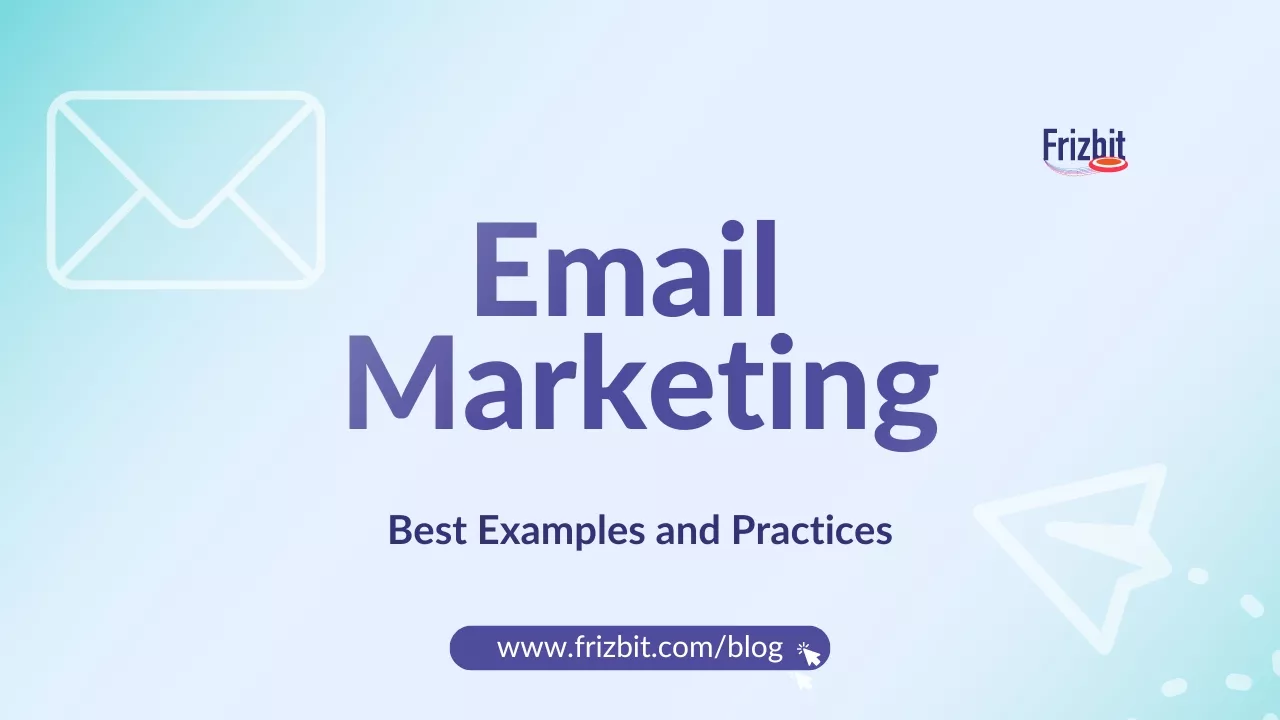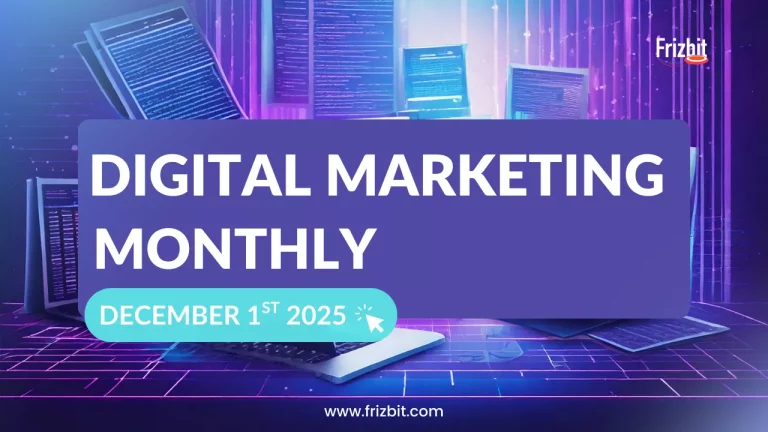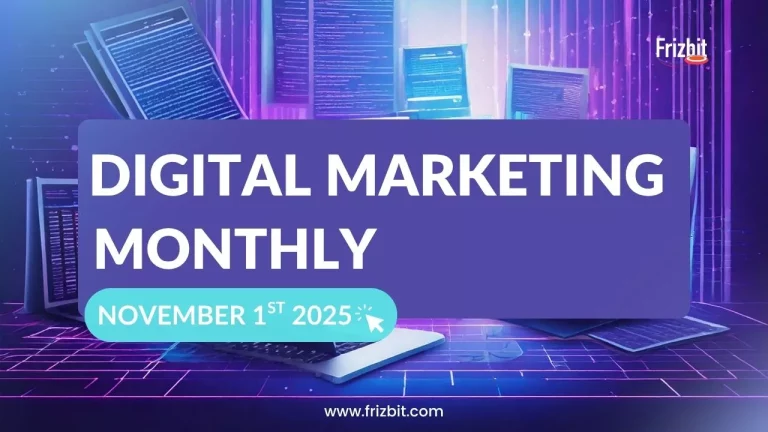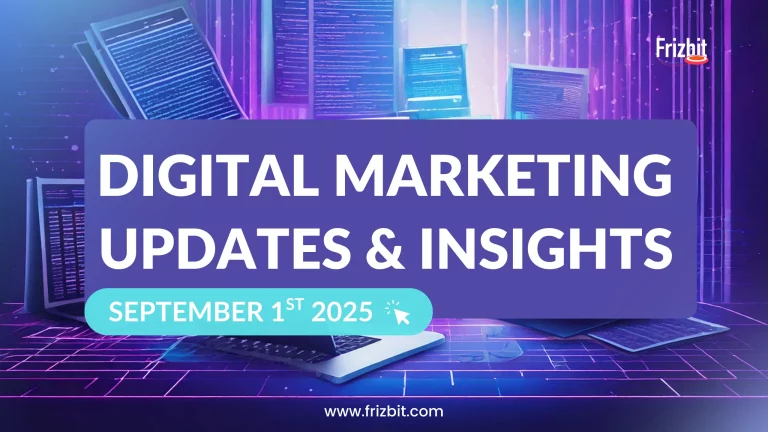
Email marketing continues to be a cornerstone of digital marketing strategies, boasting an average ROI of $42 for every $1 spent.
In this blog, you will find different email examples of brand that have been doing it right and best practices, providing important insights to enhance your own email marketing initiatives.
Why Email marketing?
- High ROI: Offers an impressive average return of $42 for every $1 spent.
- Direct Access: Provides a direct line of communication to your audience.
- Personalisation: Allows for highly personalised and targeted messages.
- Measurable Results: Easily track metrics like open rates, click-through rates, and conversions.
- Scalable: Suitable for businesses of all sizes.
- Enhanced Customer Engagement: Keeps your audience informed and engaged with regular updates.
- Cost-Effective: More affordable compared to other marketing channels.
Pro tip: For automated and efficient e-mail marketing, integrating a robust platform can significantly enhance your campaigns.
Examples of Email Marketing – Brands Doing it Right!
Reviewing examples of good email marketing can provide valuable insights into what works best for engaging your audience. The best software for email marketing can further enhance these strategies, making your campaigns even more effective.
Below, you can find 6 email marketing examples to boost your creativity and inspiration for your next campaign:
1. Welcome Emails
Example: Trainline
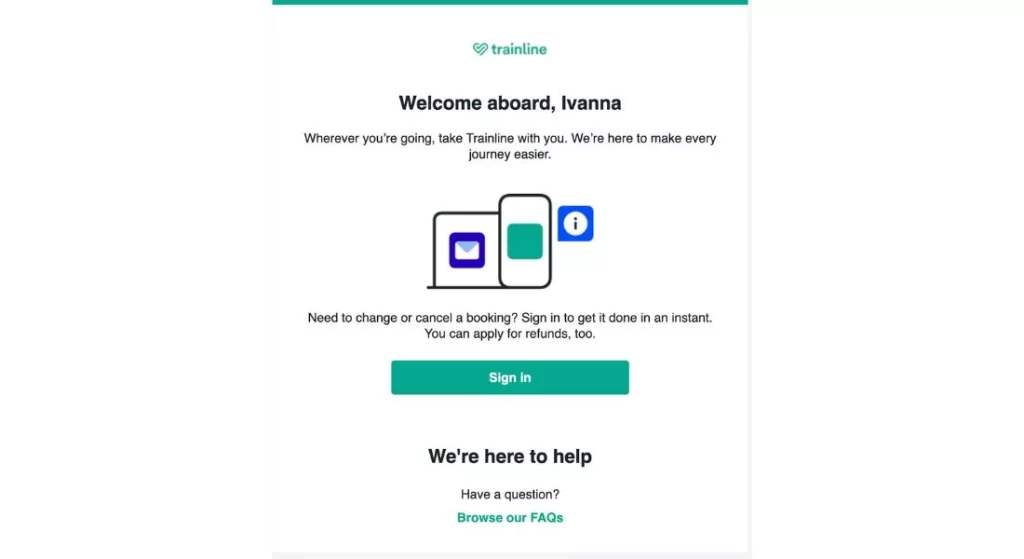
Why They’re Doing It Right: Trainline sends a personalised welcome email to new users, highlighting an easy guide to start using their platform. This helps create a strong first impression and encourages users to engage with their service immediately.
Pros:
- Immediate engagement with new users.
- Clear guidance on using the platform.
Cons:
- Risk of overwhelming new users with too much information.
2. Re-Engagement Campaigns
Example: Uber
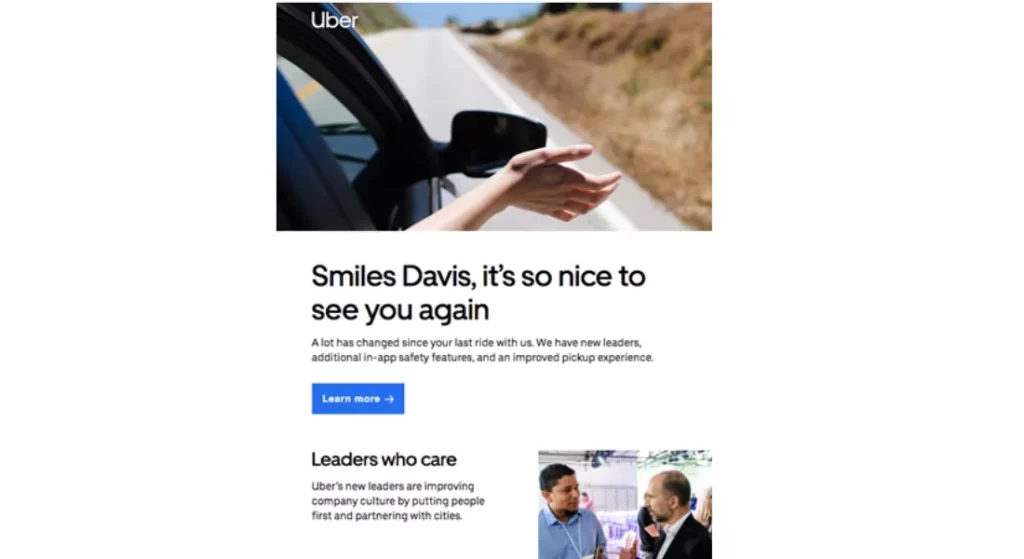
Why They’re Doing It Right: Uber’s re-engagement emails target inactive users with personalised offers or updates on new features, enticing them to use the service again. These emails are crucial for maintaining user interest and reducing churn.
Pros:
- Personalised content to re-engage users.
- Effective at reducing churn rates.
Cons:
- Might not be effective if users have moved on to competitors.
- Requires accurate data on user activity.
3. Transactional Emails
Example: Amazon
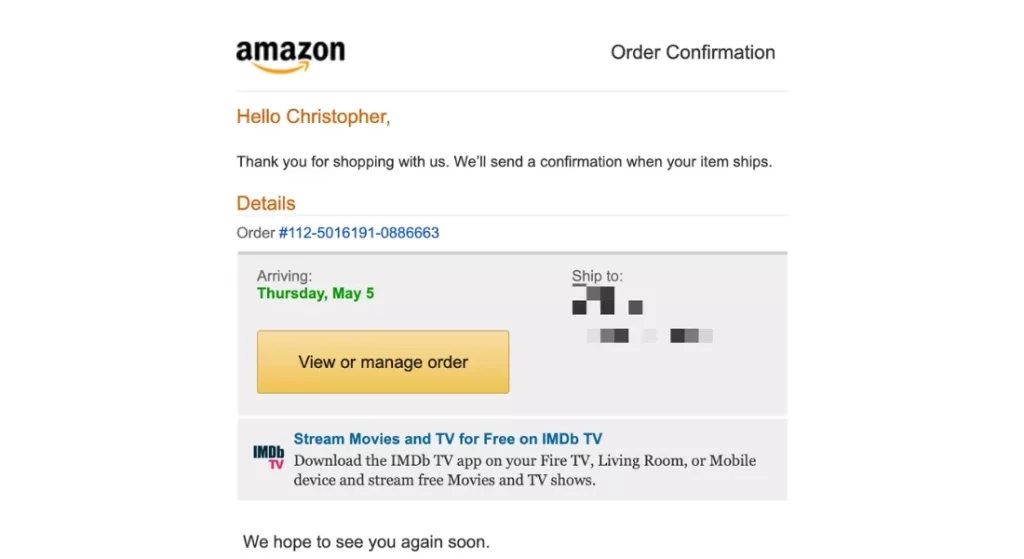
Why They’re Doing It Right: Amazon’s transactional emails, such as order confirmations and shipping notifications, are clear and informative, providing customers with all necessary details about their purchase and delivery status.
Pros:
- High open rates due to relevance.
- Builds trust with clear communication.
Cons:
- Limited opportunity for additional marketing content.
- Can become repetitive for frequent shoppers.
4. Promotional Emails
Example: Sephora

Why They’re Doing It Right: Sephora’s promotional emails are visually appealing and often include exclusive offers, product recommendations, and personalised discounts, effectively driving sales and customer loyalty.
Pros:
- Attractive design increases engagement.
- Personalised offers drive conversions.
Cons:
- Risk of being marked as spam if sent too frequently.
- Requires significant design effort.
5. Cart Abandonment Emails
Example: Target
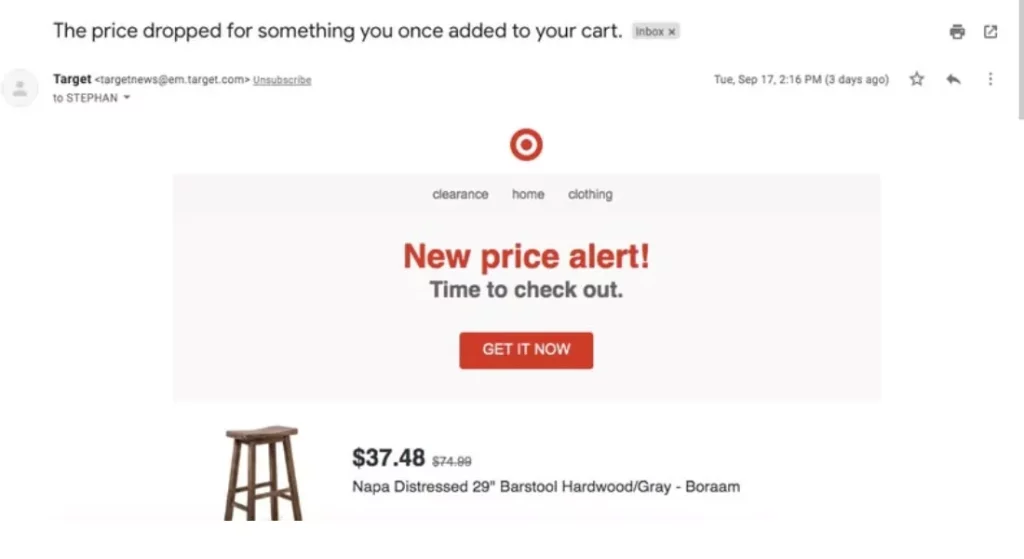
Why They’re Doing It Right: Target sends timely cart abandonment emails reminding customers of the items they left behind and offering incentives to complete their purchase like discounts or price drops. These emails significantly boost conversion rates.
Pros
- Directly targets potential lost sales.
- Incentives can effectively recover abandoned carts.
Cons
- May annoy customers if sent too frequently.
- Incentives can reduce profit margins.
6. Lead Nurturing Emails
Example: Nars
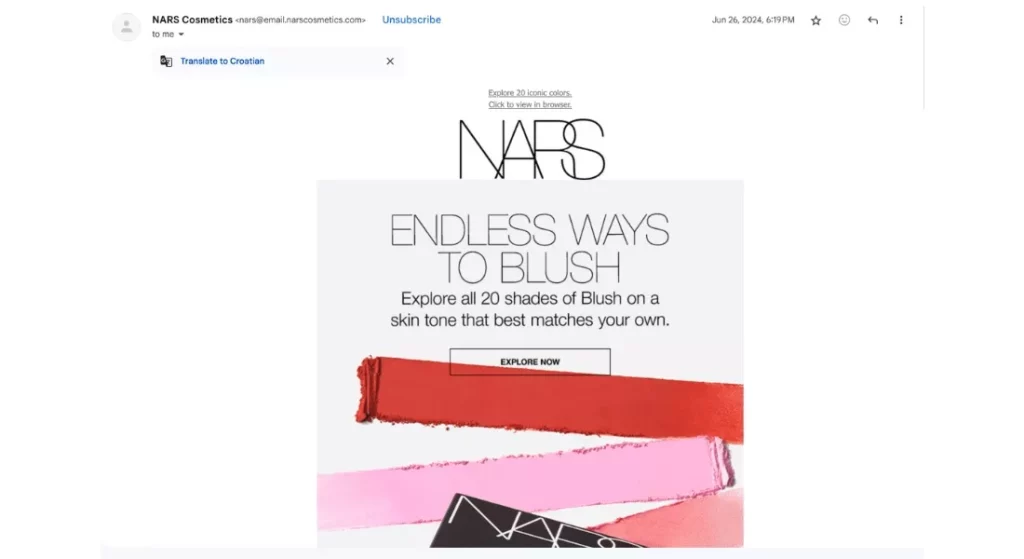
Why They’re Doing It Right: NARS sends lead nurturing emails that include a link to a skin tone test. This helps customers find the best blush tone for their skin, providing personalised product recommendations. This approach enhances the customer experience and encourages sales.
Pros
- Provides tailored product suggestions based on individual skin tones.
- Engages customers with an interactive skin tone test, increasing user involvement.
Cons
- Requires accurate customer data for effective personalisation.
- May not appeal to customers who prefer in-store consultations.
Best Practices for Email marketing
Adhering to e-mail marketing best practices ensures your campaigns are not only effective but also compliant with industry standards. Here we share the most crucial ones to develop successful email marketing campaigns:
1. Build a Quality Email List
Use sign-up forms strategically placed on your website, blog, and landing pages, ensuring they are easy to find and fill out.
Offer lead magnets like eBooks, discounts, or exclusive content to incentivise subscriptions. Additionally, leverage social media by promoting your email list and offering incentives for sign-ups.
2. Segmentation
Divide your email list into targeted groups based on demographics, behaviour, or other criteria for more personalised campaigns.
3. Personalisation
Tailor your emails using customer data. Address recipients by their first name and personalise content based on their past interactions.
Tools like Frizbit, which specialises in hyper-personalisation, can be particularly effective for implementing this practice.
4. Clear and Compelling CTAs
Ensure your CTAs are clear and action-oriented. Use contrasting colours and strategic placement to make them stand out.
5. Consistent Branding
Maintain a consistent look and feel in your emails using your brand’s colours, fonts, and tone of voice.
6. Monitor and Analyse Results
A/B test different elements like subject lines, email content, and CTAs to see what performs best.
Track key metrics such as open rates, click-through rates, conversion rates, and churn rates to gauge the success of your campaigns.
To achieve the highest engagement, following email campaign best practices is crucial, including personalisation and proper timing.
Conclusion
Email marketing is a powerful tool that, when used correctly, can drive significant results for your business. By following a comprehensive guide for email marketing and implementing these strategies and best practices, you can create effective email campaigns that resonate with your audience and drive growth.
Start leveraging email marketing today to elevate your business communication and achieve the best results for your marketing campaigns! Request a free demo with Frizbit to explore how our email marketing software can enhance your marketing efforts.
Email Marketing FAQ
Q: What is email marketing?
Email marketing is a direct tool that businesses use to communicate new products, promotions, and updates to a list of subscribers. Since recipients opt in to receive these emails, this method, often results in higher conversion rates compared to other marketing channels.
Q: What are the four types of email marketing?
- Transactional Emails: Confirmations, receipts, and notifications related to transactions.
- Promotional Emails: Special offers, discounts, and sales events.
- Newsletters: Regular updates and informative content about your brand.
- Retention Emails: Re-engagement and loyalty campaigns to retain customers.
Q: What are the 5 steps of email marketing?
- Define your goals and target audience.
- Build and maintain a quality mailing list.
- Personalisation and automation.
- Optimise for mobile devices.
- Measure and analyse results.
Q: What are the 5 C’s of email?
Be Clear about your message, be Cohesive by staying on-topic, Complete your idea with supporting content, be Concise by eliminating unnecessary words, be Concrete by using precise words.
Q: Is email marketing easy?
Email marketing isn’t particularly difficult to learn, but your success will depend on how motivated you are and how much time you can spend studying. Email marketing relies on building an email list, creating compelling emails, and sending them out to the list via an email service provider.
Q: Why is email marketing so important?
Email marketing is a cornerstone of digital marketing strategies due to its high ROI and direct connection to consumers. It allows businesses to reach their audience with personalised messages, driving engagement and conversions. Unlike social media, email marketing provides a controlled environment where brands can nurture leads and build lasting relationships. Furthermore, email marketing integrates seamlessly with other channels, such as SMS marketing, amplifying the overall impact of campaigns. Its importance lies in its versatility, cost-effectiveness, and ability to deliver measurable results. For example, combining SMS marketing with your email campaigns can increase customer touchpoints and drive higher engagement.
